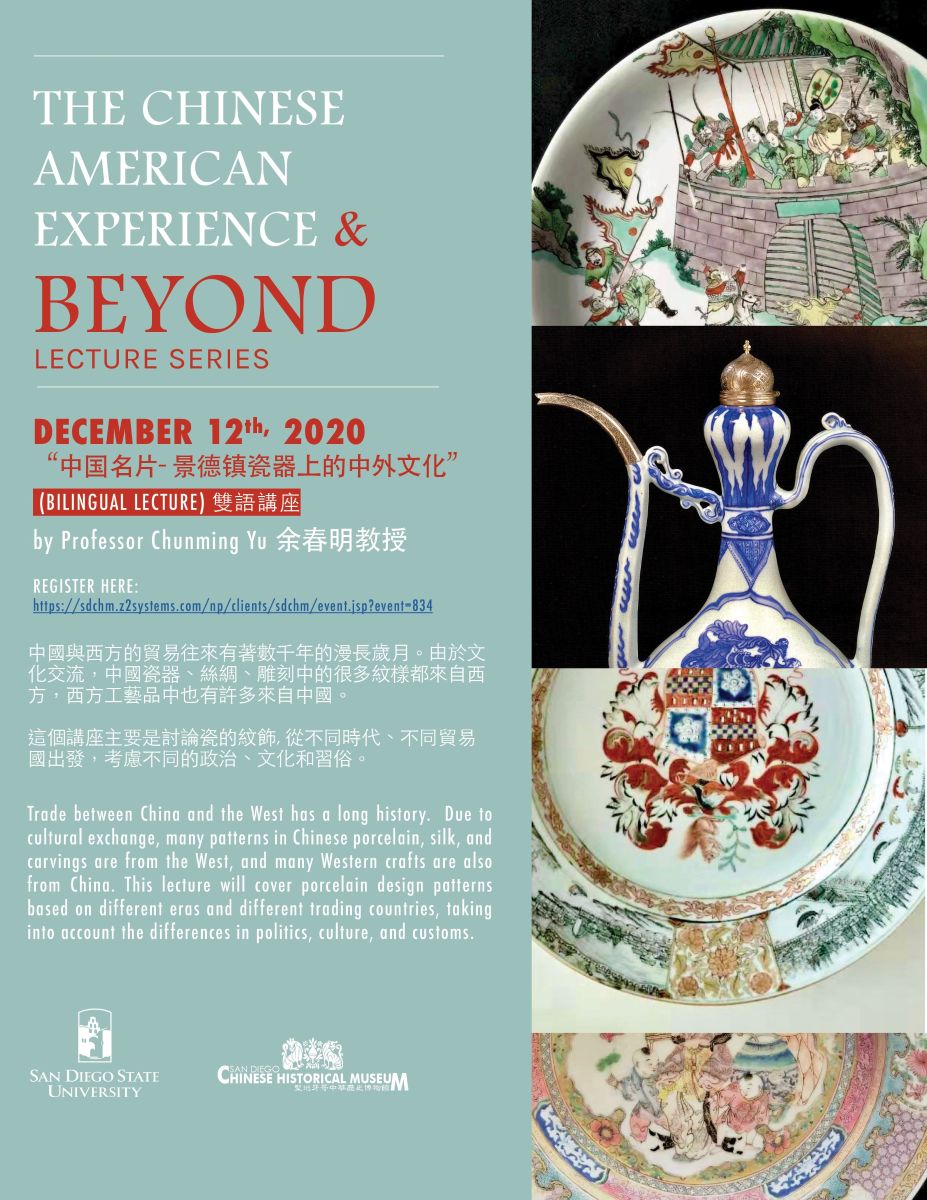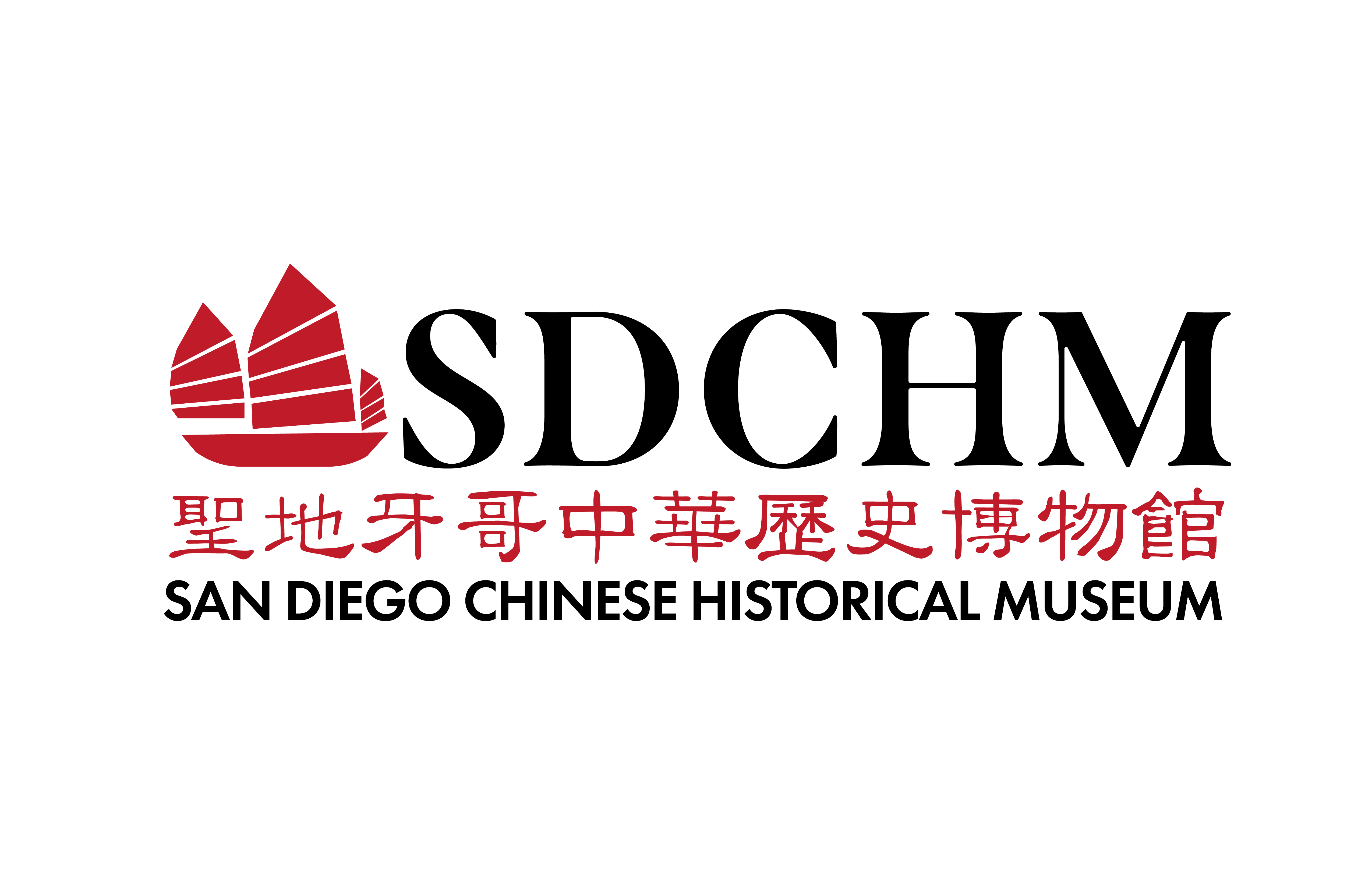景德鎮瓷器上的中外文化 (Mandarin Chinese lecture) / Chinese and Western Cultures Recorded on Porcelain
Category
Admission
- Free
Location
Virtual Meeting URL: https://sdsu.zoom.us/meeting/register/tJAodOGurTssHNXBR97Df74N5u2wgMGNoviS
Summary
Description

The San Diego Chinese Historical Society and Museum is pleased to announce a lecture in Mandarin by Professor Chunming Yu, organized with our partners at the SDSU Chinese Cultural Center:

Professor Chunming Yu will lecture in Mandarin Chinese on the influence of international trade on the design and types of ceramics produced in Jindezhen during the 16th-19th centuries. His Powerpoint file will be bilingual, and our hosts will provide English translation of his talk to facilitate the participation of non-Mandarin speaking attendees.
The following description (in Chinese, followed by English) provides a summary of his talk:
中國與西方的貿易往來有著數千年的漫長歲月,在交通工具匱乏的古代,人們為了尋求商業盈利的機會,不辭勞苦,甘冒生命危險與商旅隊伍一起穿過草原沙漠,騎著馬或駱駝、更或是步行,歷經數月、數年之久。商品承載的文化元素在漫長的歲月中,隨著局限的交通工具和沿途惡劣的環境,互相滲透。中國瓷器、絲綢、雕刻中的很多紋樣都來自西方,西方工藝品中也有許多來自中國,流動的工匠們也在異國他鄉用故土的紋飾豐富著他國的文化。
然而,在16-19世紀展開的中外海上貿易與延續了數千年的陸地貿易不同,由大型帆船裝載成噸的商品從中國通向歐美各國,大量的中國商品在西方流通,形成了一股“中國風”——一種由貿易帶來的文化時尚風潮。
中國獨有的瓷器是一種十分特殊的日用品,由於上面畫著各種繪畫而成為文化的載體,瓷器的經久耐用也使這種來自中國的文化影響深遠,以至數百年後的今天,中國明代和清代的瓷器依然在市場上流通,並成為那一段中外貿易史的見證。
這個講座主要是從不同時代、不同貿易國出發,考慮其政治、文化和習俗的不同而影響到中外貿易瓷的紋飾、器型,也就是從紋飾產生的緣由來闡述明清外銷瓷,從貿易主體的角度談瓷器紋飾,這個角度有點意思
Trade between China and the West has thousands of years history. In the ancient times, when transportation was much more limited, in order to seek commercial opportunities, people would risk their lives and travel through the grasslands and deserts with business teams, riding horses or camels, or even walking, for months and years. The cultural elements borne by commodities have infiltrated society, even in the face of harsh environmental conditions. Still, from the period before the 16th century, cultural exchange between China and the West was evidenced by patterns on Chinese porcelain, silk, and carvings. Craftsmen continued to enrich the culture of other countries through trade.
However, the Sino-foreign maritime trade during the 16th and 19th centuries differed notably from land trade. Commodities loaded on sailing ships traveled from China to Europe and to the Americas. A large number of Chinese products circulated in the West. Chinese porcelain is unique as an object that may be given everyday use. The paintings on porcelain became a carrier of culture. The material's physical durability attests to its longevity as a carrier of cultural influence, which has lasted for hundreds of years. Chinese porcelain of the Ming and Qing dynasties that was produced in Jindezhen is still in circulation on the market and has become a witness to that period of Sino-foreign trade history.
This lecture is mainly based on different eras and different trading countries, taking into account the differences in politics, culture, and customs that affect the patterns and types of ceramics in Chinese and foreign trade. The main point of view is from the origin of the patterns to explain the export of Ming and Qing porcelain.
Here is the link to register to attend the event in Zoom: https://sdsu.zoom.us/meeting/register/tJAodOGurTssHNXBR97Df74N5u2wgMGNoviS
| Neon CRM by Neon One |
Copyright © 2023 San Diego Chinese Historical Museum - All Rights Reserved.
Powered by GoDaddy Website Builder
